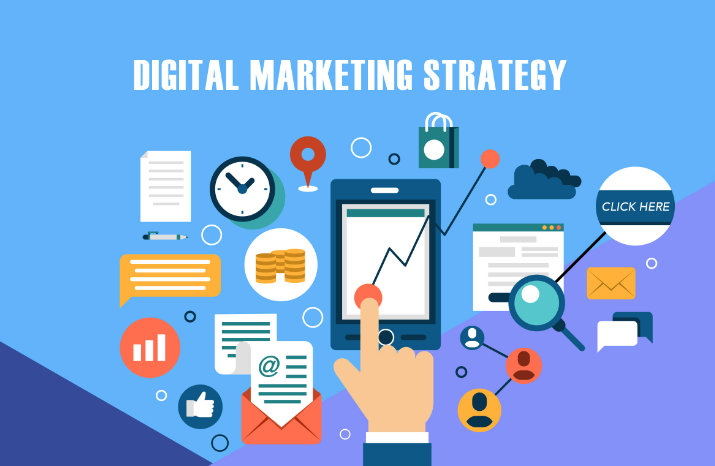Why Online Advertising?
- Targeted Reach: Online advertising allows businesses to target specific demographics, interests, and behaviors, ensuring that ads reach the most relevant audience.
- Cost-Effective: Compared to traditional advertising channels, online ads often provide a more cost-effective solution with measurable ROI.
- Measurable Results: Online advertising platforms offer detailed analytics and reporting, allowing businesses to track performance, optimize campaigns, and make data-driven decisions.
- Flexibility and Scalability: Digital ads can be quickly adjusted or scaled based on performance and budget, providing flexibility to adapt to changing market conditions.
Key Online Advertising Channels
1. Search Engine Advertising
- Overview: Ads appear on search engine results pages (SERPs) when users search for specific keywords. The most popular platform is Google Ads.
- Types:
- Best Practices: Conduct keyword research, write compelling ad copy, and use ad extensions to provide additional information and drive clicks.
2. Display Advertising
- Overview: Banner ads are displayed on websites and apps across the web, targeting users based on their browsing behavior and interests.
- Types:
- Best Practices: Design eye-catching visuals, use clear calls-to-action (CTAs), and leverage retargeting to re-engage users who have previously interacted with your brand.
3. Social Media Advertising
- Overview: Ads appear on social media platforms such as Facebook, Instagram, Twitter, LinkedIn, and TikTok. Social media ads can be highly targeted based on user demographics, interests, and behaviors.
- Types:
- Best Practices: Create engaging and platform-specific content, use audience targeting options, and monitor ad performance to optimize campaigns.
4. Video Advertising
- Overview: Ads are displayed before, during, or after video content on platforms like YouTube and social media. Video ads can drive high engagement and brand recall.
- Types:
- Best Practices: Create high-quality, engaging video content, keep ads concise, and use strong CTAs to encourage viewer actions.
5. Native Advertising
- Overview: Ads blend seamlessly with the content of the platform where they appear, such as sponsored articles or posts. Native ads aim to provide a non-disruptive user experience.
- Types:
- Best Practices: Ensure ads align with the content and style of the platform, provide valuable or informative content, and maintain transparency about sponsored content.
Best Practices for Online Advertising
1. Define Clear Goals
Establish specific, measurable goals for your advertising campaigns, such as increasing website traffic, generating leads, or boosting sales. Clear objectives help guide your strategy and measure success.
2. Understand Your Audience
Conduct thorough research to understand your target audience’s demographics, interests, and online behavior. Use this information to tailor your ads and targeting strategies.
3. Optimize Ad Creative
Design visually appealing and compelling ad creatives that capture attention and drive action. Ensure your ad copy, images, and videos are relevant to your audience and aligned with your brand.
4. Use Targeting Options
Leverage targeting features provided by advertising platforms to reach the most relevant audience. Options may include demographic targeting, behavioral targeting, and geographic targeting.
5. Monitor and Analyze Performance
Regularly review your ad performance using analytics tools provided by the advertising platforms. Track key metrics such as click-through rates (CTR), conversion rates, and return on ad spend (ROAS) to assess effectiveness.
6. A/B Testing
Conduct A/B tests to compare different ad variations and determine which performs best. Test elements such as headlines, images, CTAs, and audience segments to optimize your campaigns.
7. Budget Management
Set a budget that aligns with your advertising goals and monitor spending to ensure you stay within limits. Use automated bidding strategies to manage costs and maximize ROI.
8. Stay Up-to-Date
Keep abreast of industry trends, platform updates, and changes in advertising regulations. Adapt your strategies to leverage new opportunities and comply with evolving standards.
Popular Online Advertising Platforms
1. Google Ads
- Overview: The largest search engine advertising platform, offering search ads, display ads, shopping ads, and video ads.
- Features: Keyword targeting, ad extensions, advanced analytics, and remarketing.
2. Facebook Ads
- Overview: A major social media advertising platform offering highly targeted ads across Facebook and Instagram.
- Features: Demographic targeting, interest-based targeting, carousel ads, and video ads.
3. LinkedIn Ads
- Overview: A professional networking platform that provides advertising options targeted to business professionals and organizations.
- Features: Sponsored content, text ads, and InMail ads.
4. Twitter Ads
- Overview: A social media platform offering various ad formats including promoted tweets, trends, and accounts.
- Features: Audience targeting, engagement metrics, and trend promotion.
5. YouTube Ads
- Overview: A video platform with options for in-stream ads, video discovery ads, and sponsored content.
- Features: Video targeting, engagement metrics, and detailed analytics.
6. Taboola and Outbrain
- Overview: Native advertising platforms that distribute sponsored content across various publisher sites.
- Features: Content recommendations, audience targeting, and performance analytics.
Conclusion
Online advertising offers powerful tools for reaching and engaging your target audience. By leveraging various advertising channels and following best practices—such as defining clear goals, understanding your audience, and optimizing ad creatives—you can create effective campaigns that drive meaningful results. Whether using search engine ads, social media promotions, or video advertising, staying informed and adaptable will help you achieve your marketing objectives and maximize your return on investment.

